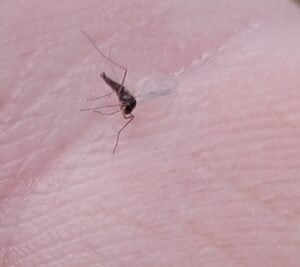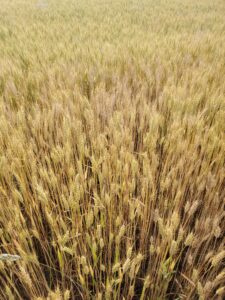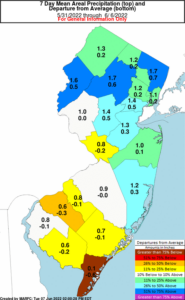Despite the thunderstorms that rolled through on Tuesday night, Salem County and others bordering the Delaware River have experienced 27 weeks of severly dry conditions according to the NJ DEP Drought Information website for Regional Water Supply Indicators for the 90 day stream flow reporting.
Salem County: The National Integrated Drought Information System created by NOAA and the US Drough Monitor website have most of Salem County listed as abnormally dry but not yet in a declared drought situation.
Crop scouting observations (Salem County)
May planted corn is beginning to tassle with most fields exhibiting exceptional height, uniformity and color. Drought stress during pollination this week; along with moderate silk clipping pest pressure (june bugs, japanese beetles, grasshoppers) could impact kernal development.
Weed control in corn is generally good to excellent. Velvetleaf, cocklebur, jimsonweed, ivy leaf, common morning glory, giant ragweed, cocklebur and shattercane are noticeable along field edges.
Double cropped corn after small grains, and later planted corn is exhibiting water stress with many fields under three feet tall remaining curled at 7:30 am.

National Integrated Drought Information System, NOAA. July 14, 2022
The next brood of grasshoppers has hatched in alfalfa fields and looks as abundant as in 2021. The good news is the brood hatches in May and June did not appear to be as prolific as last year’s. Hay and soybean producers should monitor the grasshopper pressure in individual fields for signs the population is going to surpass economic thresholds. Corn fields planted in high infestation areas last year may also see some significant feeding as the drought continues. Effective control methods are only useful on nymph stage grasshoppers. Contact the Salem County office to let Melissa know if you are seeing significant grasshopper damage.
Green-redroot pigweed, spiny pigweed, pa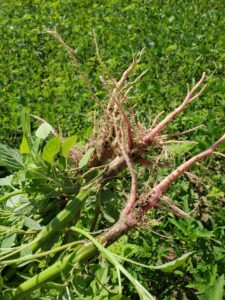 lmer amaranth are outpacing soybean height in fields yet to be sprayed. Weed control in soybeans is noticeably better this year compared to conditions this time last year.
lmer amaranth are outpacing soybean height in fields yet to be sprayed. Weed control in soybeans is noticeably better this year compared to conditions this time last year.
 But the following week of low humidity was less than conducive for disease proliferation until the 22nd through the 25th when humidity levels briefly rose and remained in the high 80’s and 90’s for three days, before dropping nicely to the mid 60’s the last two days of June. However, wind speeds of 15 to 25 mph from June 13th to June 19th wicked moisture out of corn and soybeans leaving the crops in a moisture deficit.
But the following week of low humidity was less than conducive for disease proliferation until the 22nd through the 25th when humidity levels briefly rose and remained in the high 80’s and 90’s for three days, before dropping nicely to the mid 60’s the last two days of June. However, wind speeds of 15 to 25 mph from June 13th to June 19th wicked moisture out of corn and soybeans leaving the crops in a moisture deficit.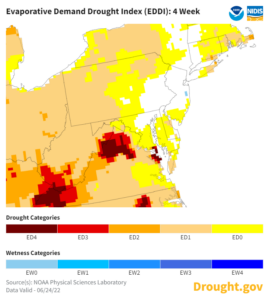 -Jersey. This tool created by the NOAA Physical Science Laboratory is an indicator of both rapidly evolving “flash” droughts and sustained droughts. “EDDI can offer early warning of agricultural drought, hydrologic drought, and fire-weather risk.”
-Jersey. This tool created by the NOAA Physical Science Laboratory is an indicator of both rapidly evolving “flash” droughts and sustained droughts. “EDDI can offer early warning of agricultural drought, hydrologic drought, and fire-weather risk.”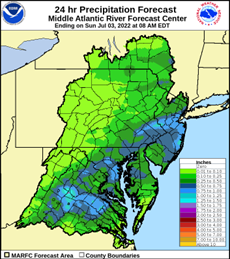 New Jersey anticipates a tenth of an inch to half inch of rainfall for most of Salem County through July 3 and much-needed swath probable for the northern counties where drought conditions the last seven days are 51% to 75% below normal.
New Jersey anticipates a tenth of an inch to half inch of rainfall for most of Salem County through July 3 and much-needed swath probable for the northern counties where drought conditions the last seven days are 51% to 75% below normal.